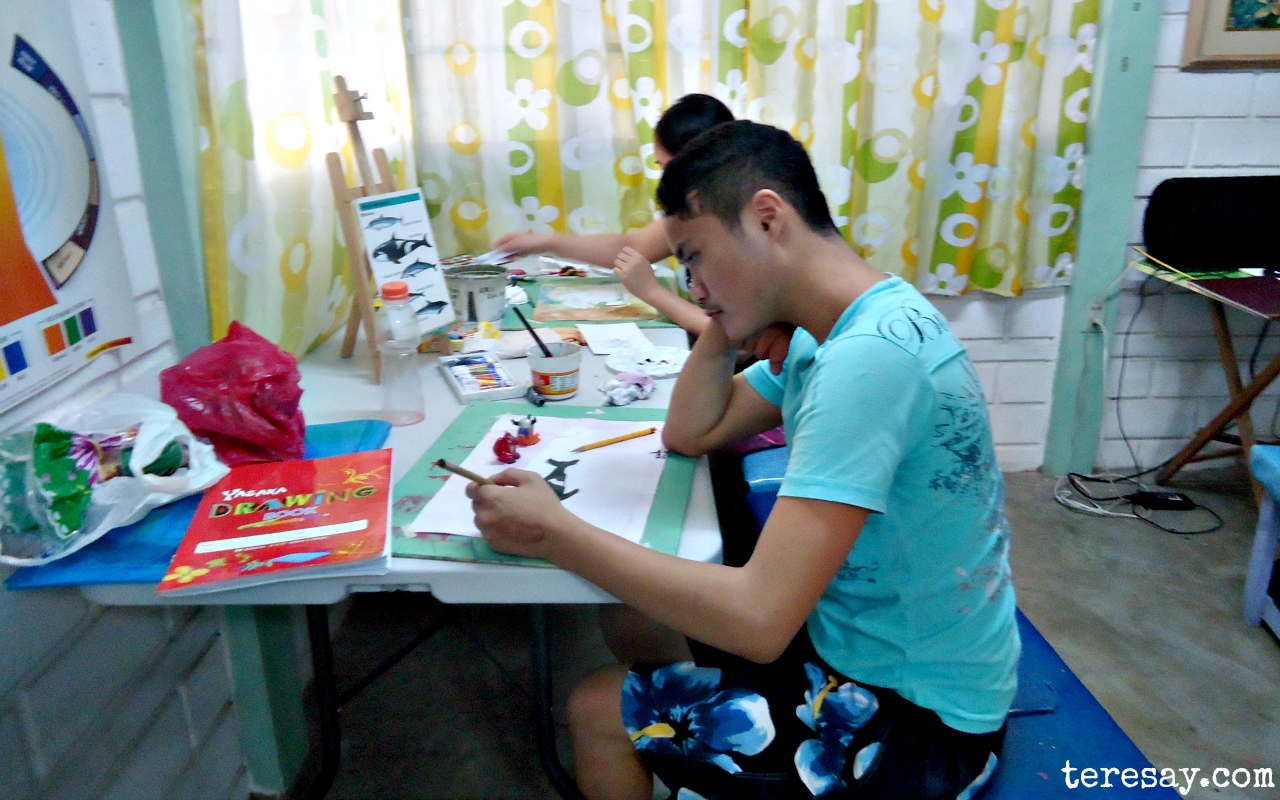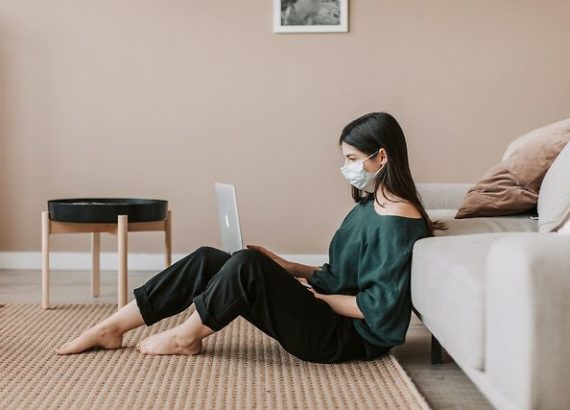Art as Therapy
Can looking at, doing, or being surrounded by art provide any therapeutic benefit to a person undergoing difficulties in life whether physical or psychological? This is what art therapy is supposed to give. Art therapy is currently being applied on children, teens, young adults ,and the elderly in varying circumstances and conditions.
Art as Therapy or Psychotherapy
The American Art Therapy Association defines art therapy as “a therapeutic use of art making, within a professional relationship, by people who experience illness, trauma or challenges in living , and by people who seek personal development”. This definition clearly establishes that art can be used as a rehabilitative therapy by people who have learning and physical disabilities; health problems pertaining to behavior, emotions, and mental state of mind; physical illness; neurological conditions; brain injury; and terminal illnesses. It also points out the role of art in simply adding a different dimension to a person seeking for personal betterment. This means therefore that art therapy is not only for the “sick” but also for those who seek inner growth.
Since the role of art has been fairly established as a sound-off venue for many people undergoing extraordinary stress such as convicts, sexual offense victims, terminally-ill patients, and children with behavioral problems, more and more programs are being developed to address their specific needs. Professional art therapists face the challenge of not only teaching art techniques but also in allowing the student or the participant to focus on and release their inner experiences.
How Did Art Therapy Start?
Art therapy was first heard of during the middle part of the 20th century and claims its roots in art education and developmental psychology. A British artist by the name of Adrian Hill was acknowledged as the first one to use the term art therapy in relation to his personal experience of having tuberculosis. While Hill actively promoted art as as defense against illnesses, another artist – Edward Adamson , promoted its use in mental hospitals. These two , together with other artists, saw the healing potentials of art and worked toward its recognition. At some point in time, questions were being raised as to whether the resulting art forms can be considered part of medical records of patients or simply works of art that just happened to be done by a person battling with a certain impairment, illness or disability.
There was much emphasis on spontaneous expression and interpretations coming from art teachers were discouraged. In the US, art therapists are required to have educational foundations in psychology specifically those handling students with psychological cases. For more recreational purposes of art learning, artists who wish to teach and work in such nature are considered acceptable.
Uses of Art Therapy
Whether good or bad, art provides a way of escaping the harsh realities of a terminal illness, a traumatic life episode, and the everyday pressures of life. Art therapy however does not seek to encourage denial of the truth but rather encourage art students to go beyond their personal difficult circumstances. In a way, it helps people cope with their bad feelings by engrossing themselves in what they can create instead of concentrating on a bleak present, dark past, or impending doom.
Reduced emotional distress have been widely observed in people actively engaging in art. There must be some reason why an art landscape is usually found in hospital rooms or any recuperating room. The positive and soothing effect it provides can hardly be ignored. Art has been known to alleviate actual symptoms like pain and mental instability.
My Say
Art comes in many forms and is not limited to drawing and painting. Art students can opt for sculpture, pottery, crafts, and photography among others. In essence, art as therapy works to make life more livable for those facing incredible challenges in life.
















MomGlenz
those are really nice painting …i wish i have talent like that
Teresa Martinez
It is said that we can still derive benefits from art even if we don’t have talent for it. It’s probably the act of doing it that has a calming effect.
Mary
I used to paint a lot. It was my way of expressing myself when words couldn’t be spoken. Art is indeed a way of therapy. You get to draw onto a piece or paper or paint your feelings without the need of saying a word. How I wish to have more free time so I can go back to painting.
Mary
By the way, I also want to take sculpting classes and workshops. I try looking for one in offered within our town but there’s none at the moment. Hopefully, soon!
Teresa Martinez
I hope you find time for it especially since you are genuinely interested in art.
Dhemz
wow, I would definitely say it’s indeed therapeutic…love all those pieces!
Teresa Martinez
I guess we should try find different ways of enjoying life and art is one of the quieter ways of doing it.
raine
IMHO I also think that art is therapeutic esp. doing it irregardless of your output…I guess the process itself is what’s important as you learn to express yourself through the various mediums of art and challenge yourselfe to be more creative
Teresa Martinez
Regardless of the end result, the activity itself is what makes art therapeutic.
Chubskulit Rose
My kids are into arts which I am so glad as I don’t have that artsy inclination. I believe that art is therapeutic because whenever my kids gets antsy, I give them paper, pencil, and crayons and they are at peace lol.
Teresa Martinez
I do the same thing with my kids and an art session really does wonders for their nerves and mine as well.
papaleng
Buti na lang hindi ito naging subject sa college, Naku tiyak 5 ako. Kahit kasi stick drawing di ako marunong. On the bright note, if medical science think that art is a therapy then,it will be awelcome development for individuals suffering from depression.
Teresa Martinez
There appears to be good reason to believe that art or engaging in it helps ease depression.
#TownExplorer | @edmaration
Arts is indeed a therapy. In the hospital, nurses also do art therapies, even at the mental asylum. God has really designed Arts to be used for the welfare of humanity 🙂
Teresa Martinez
Yes, I think art has a deeper purpose other than aesthetics.
Koko Tamura
I totally agree that art really is a great therapeutic method… for me.. i love creating collage… in fact… in my room.. i created a collage of all the things i want in life… it’s called a vision board.. not only does it give me an avenue to express my creativity… its my guiding force whenever i feel loss or unsure of life’s many realities
ralph
art in an form is a way to express ourselves.. painting in particular, i believe, will have a positive effect in a sense that it gives someone, inspired or depressed, an outlet to vent his/her feelings freestyle…Yahweh bless
Teresa Martinez
Art is a wonderful and productive way of expressing inner feelings.
Carizza
true! paintings makes you feel relaxed and fulfilled. I miss painting on canvas, seriously. I have 2 big canvasses here with unfinished paintings. I need to find time to work on it!
Teresa Martinez
I hope to see your finished paintings soon on your blog perhaps, if not on your solo exhibit?
Gemma|My Dailies
beautiful too! I guess, it also has something to do with visualization.. beauty, positivity and God’s blessing encompassed in the works of art!
Teresa Martinez
God must be here with us to make such works art possible.
Jessica Cassidy
Therapy comes in many types and art therapy is perfect to keep us forget matters like stress. This is a wonderful way to focus on something that you are talented of.
Teresa Martinez
Even without obvious talent in art, we can still use it to gain positive feelings in our attempts for creative work.
Franc Ramon
Art is definitely a nice outlet as even a simple doodle can really be calming and it’s also a form of self expression.
Teresa Martinez
Art need not be complicated for us to be able to enjoy it.
Lessons Of A Dad
I remember, after the typhoon Sendong, the newly orphaned and homeless children were made to draw to express themselves.
I also remember my middle child, after my father died, drawing sad pictures of the funeral.
Art really is therapy.
Teresa Martinez
Art has made it possible for many people in difficult circumstances to recover.
Ness
This hobby can be really nice. However, for me, II already discovered that my artistic side is not that good. And my attention span is shorter than I thought.. But seeing your finish product, will surely bring out that genuine smile of contentment.
Teresa Martinez
It is not exactly the technical perfection of an art work that matters. It is how it affects us.
special education philippines
Oh another interesting topic again Ms. Tere. I will be reposting this on the Special Education Philippines Fan page to support the MET Museum of Manila’s activity for their art activities. 🙂
Teresa Martinez
Why thank you, Teacher Ia. That would be nice.
Bam
I’ve always knew that art is really some kind of therapy, but I don’t how! because I noticed every time I see artist do their thing in painting they look really serene and calm.
Teresa Martinez
Yes, it is as if a part of them is in their work.
bayenmd
agree ako dito na art can be used as therapy. Marami na ang gumagamit ng approach na ‘to.
Teresa Martinez
Same here.
Alex
I tried this before, it helped me calm down…especially during stressful days or when I feel lazy. Usually, I paint abstract but I’m often paint imaginary locations.
Teresa Martinez
It’s good that you have such outlet.
Michelle
True. I guess, just like any other outlet, art can be a good way of relieving us of whatever is bothering us by being absorbed in the activity. It distracts us from thinking and feeling bad and helps clear our minds. It is also a healthy and productive way of coping with our difficulties instead of resorting to alcohol and drugs which a lot of people have mistakenly done.
Teresa Martinez
That is quite true. There are many positive things that can be dome in spite of our difficulties in life.
dimaks | The Urban Walker
I found the same observation too – a lot of landscape paintings maybe found in the hospitals. Perhaps there are hidden healing elements in the way how the shapes and colors interact to each other in a canvass 🙂 The mind think and soar high to a certain imaginary cloud, thereby triggering blood circulation? I don’t know.. I might be assuming but I guess there is a relation somehow.
Teresa Martinez
There must be something positive being triggered in people by art thus the effect.